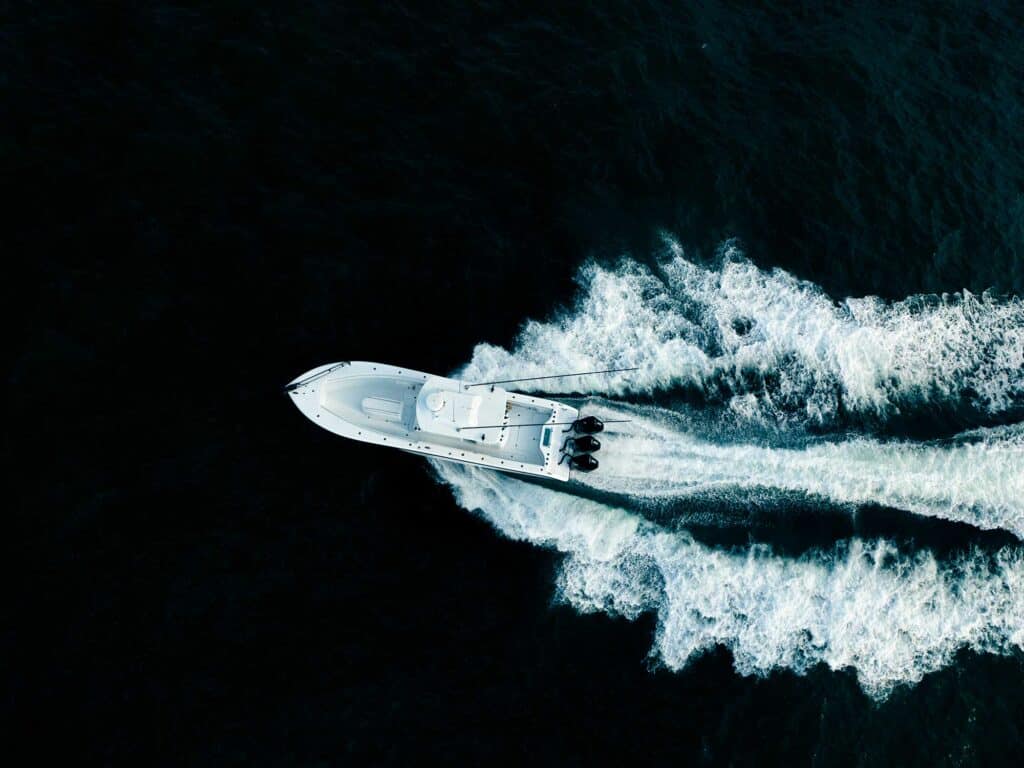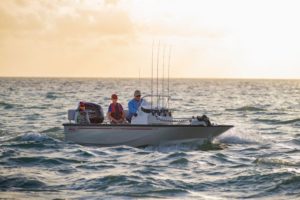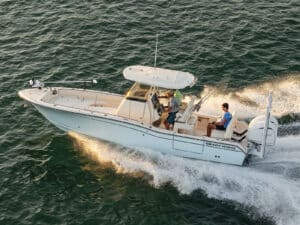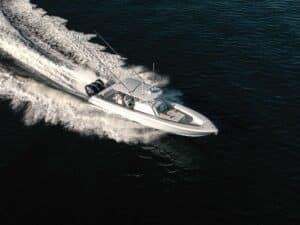
If you’re planning to shop—and possibly plunk down hard-earned money—for a center-console fishing machine this year, consider the following. Here is my must-have list of five features you cannot do without on your new pride and joy.
Enough Power
Whenever I write a review for a center-console with an advertised price that includes a power package that’s inadequate, I add the advice: Don’t do it! Underpowering a center-console is the worst mistake a boat buyer can make. Not only will it struggle to get on plane, but the helmsman will also have a hard time maintaining a safe speed in rough water. You also will get hammered when you trade it in or try to resell it. Go online and find a review of a boat with the engine package you are considering or ask the dealer. If the top speed is around 40 mph, it’s a dog. In my experience, the magic minimum top-speed number for most center-consoles today is around 50 mph.
Tall Gunwales
I used to fish with a friend of mine in the Florida Keys who had a popular 25-foot offshore boat that had a rear interior gunwale height of only 22 inches. In seas above 2 feet, my knees were sore as hell by the end of the day from bumping against the side of the boat. And at least once, I felt like I might fall in. For safety and comfort, there should be a minimum height of 26 inches, with more toward the bow. Toe rails increase safety when stretching to gaff or net a fish. Padded bolsters are a big bonus because they give you something to lean into when you’re battling big pelagics.
A Real-Deal Livewell
Tiny livewells serve as a dead giveaway that a boat wasn’t designed by someone who fishes. The primary livewell on an offshore vessel should hold a minimum of 20 gallons, and 30-plus gallons would be even better. Secondary baitwells can be smaller because they are used as a convenience to cut the distance for anglers at the opposite end of the boat. Livewells should be round or oval, and with strong recirculating pumps. Pumps that reside within a sea chest are the gold standard for offshore center-consoles to prevent air from entering the line when running. The lids should be clear and have a hydraulic dam or friction hinges to prevent banging shut. Aquarium-style livewells with clear sides for bait monitoring are also a plus. Consider supplemental aeration systems; these can help keep even the most delicate baitfish lively on long runs.
360 Degrees of Fishability
One of the primary reasons for owning a center-console instead of a dual-console or express boat is the ability to fight a fish or cast from any location around the boat. Any obstruction such as fixed seating on the perimeter can hinder an angler. Fold-down stern benches or flip-up jump seats add seating without taking up space. Large consoles are currently the rage to offer enough real estate for large electronics displays and roomy head compartments, but when they limit walkaround space, it becomes a problem. There should be at least 20 inches in between the gunwale and the console for comfortable transit fore and aft.
Adequate Rod Storage
A good indicator if a center-console is designed as a serious fishing machine is its number of rod holders. If a boat has more cup holders than rod holders, it’s a dayboat. On smaller center-consoles, there should be a minimum of three gunwale holders per side and at least four in the stern, with storage racks under the gunwale. T-tops should have at least four rocket launchers, and if they are high above the deck, there should be some sort of step up to help access them. Some of the better-designed boats can safely stash as many as 60 rods out of the way and ready.









